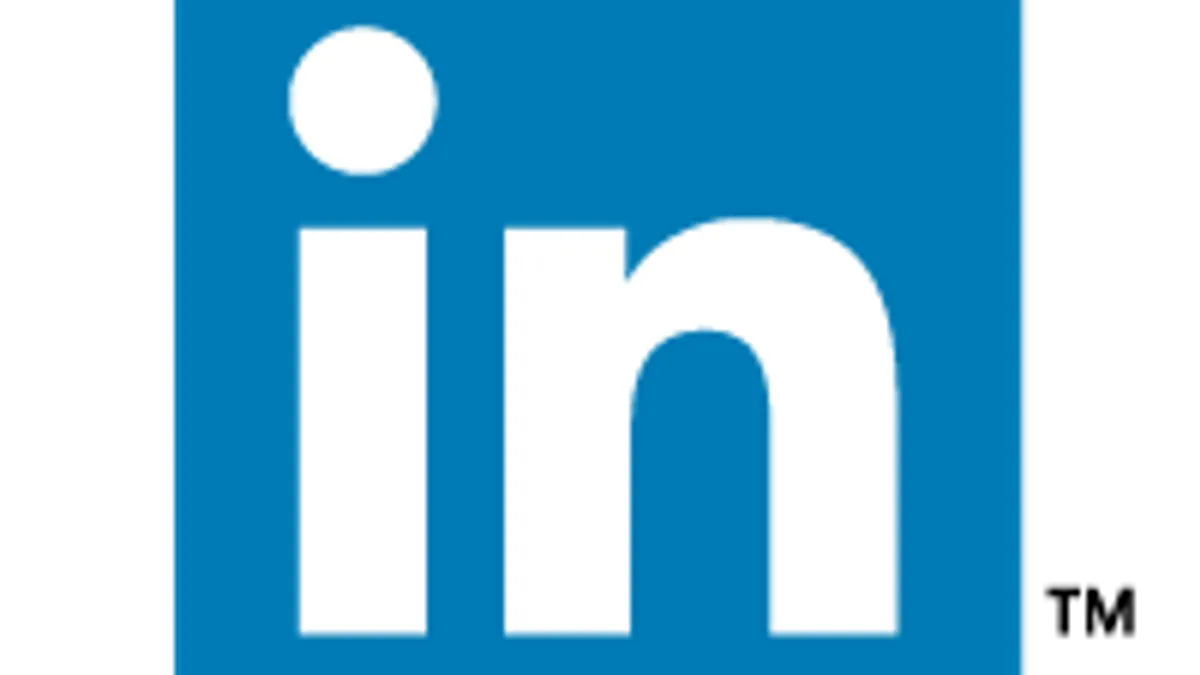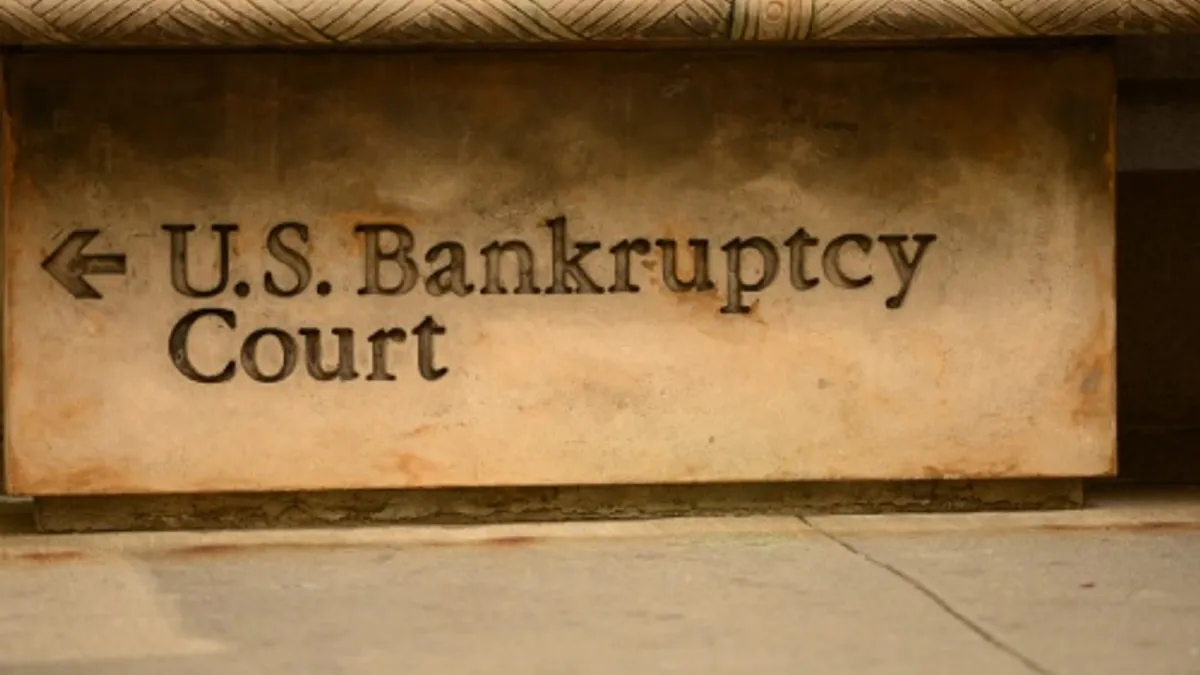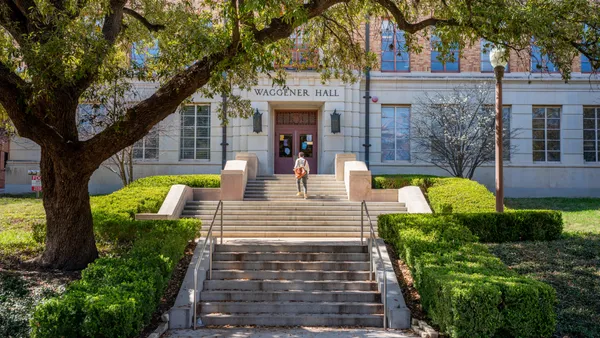Whether higher ed's business models can be sustained is a hot topic of debate among many in higher ed. Pressure is mounting due to several factors—soaring student loan debt, cuts in funding, disruption from MOOCs and calls from lawmakers, including President Obama, to create a more efficient model, just to name a few.
Certainly, something is bound to change if higher ed institutions are to avoid a hypothetical extinction, but what exactly will it be? We asked the experts on Education Dive's Higher Education Management LinkedIn group to share their thoughts on what higher ed business models might look like a decade from now, and this is what they had to say.
1. FEWER BARRIERS THANKS TO MOOCS
"I think we need to think differently in order to change at the speed of technology... With MOOCs becoming so popular—as they should, due to the barriers to higher education they eliminate—let's work the MOOC into our business models. How can this be done? Work with major MOOC partners to offer options for students to study pre-requisite courses through a MOOC, use the RPL process to determine equivalent learning (fee based RPL at cost recovery only) and maybe even have one of the courses within a certificate program or certification as a MOOC (loss leader). My two cents."
- Joanne OLeary, Chair, Contract Training and Continuing Education at College of the North Atlantic
2. MORE TECHNOLOGY, JOINT DEGREES
"MOOCs could be significant as marketing or taste-and-see experiences, BUT... Why not a redefinition of product ranges rather than the fundamentally sound idea of universities as conduits for higher learning? An example might be some sort of institutional credit for a specific institutional MOOC allowing for progress to Distance Learning, and DL with increased access in real time to attend lectures/seminars and interact with other students (including on-campus). Then, so-called 'blended' courses, with 2-3 years by DL and access followed by 1 year on-campus. Add to the mix joint degrees (think Oxford-Harvard if in doubt), and universities increase both student numbers, access and alumni. Costs and fees would range from low to high depending on factors such as time on-campus; but the 'all or nothing,' 3- to 4-year, full-time model will just be one route.
All of this looks difficult, but one can see elements of all of these already. Do university leaders have the vision or desire to make this the age higher study and learning?"
- Paul Weller, New Product & Business Development at The Big Choice Group
3. MORE STUDENT-CENTRIC OFFERINGS
"The problem with the higher ed model today is that it is not customer-centric. MOOCs and online educational offerings are one of three heats that higher ed institutions needs to be focused on. Apprenticeship is another element that most schools do not place enough of an emphasis on. Thirdly, schools are not focused on the customer - they are focused on infrastructure and bureaucracy. How will the model change? Will it be recognizable in the next 10 years? Student debt has accelerated from $230 billion US just 10 years ago to over $1.2 trillion and rising. Higher ed is facing a bubble. What's going to cause the bubble to burst will be the emergence of higher-end, lower-cost, unaccredited schools that will provide a more relevant education AND give its students better networks and job opportunities. These schools are emerging now, and I am working on one in the secondary ed space. As those schools grow and take students away from traditional colleges, those higher ed institutions that adapt quickly will survive but many others will face hard financial times."
- Michael Hackmer, Founder at Social Web Tactics
4. FOCUS ON OUTCOMES BREEDS COMPETENCY-BASED ASSESSMENT
"Given the Dept. of Ed's emphasis on student outcomes, the president's desire to tie these measures of success to a new ratings system and the unhappiness with the credit-hour-based model, the potential exists for a shift to a model of competency-based assessment.
With competency-based assessment, there is at least the potential that grade inflation might be contained. The professional schools, for instance, have external measures of competence (bar exams and board certification). A number of medical schools are already reworking things—see Educating Physicians: A Call for Reform of Medical School and Residency by Cooke, Irby and O'Brien, funded by The Carnegie Foundation.
True, law and medicine are special cases; but they provide important models.
It is of the utmost importance that these changes are being wrought from within, by academics themselves, and not imposed from without, by government agencies."
- Glenn Everett, Principal at Everett Higher Education Consulting, Advisor and Subject Matter Expert for BerryDunn's Higher Education Group
5. CONSOLIDATION WEEDS OUT SHORTSIGHTED INSTITUTIONS
"In my humble opinion, you have a bit of a perfect storm forming. Most of the nation will see declines in the traditional-aged student, at a time when flexibility in price is becoming limited due to crushing student debt levels and the end of a 1700% increase in tuition between 1970 and 2010. In addition, I think MOOC players such as MIT and Harvard will at some point attempt to monetize those offerings, which would strip away revenue from lower tier institutions. And lastly, many institutions over the past decade or more, in order to stay up with the Joneses, have leveraged themselves to a precarious extent. In short, those that are not nimble, not innovative and those that would use past strategies in the future world will have an extremely tough slog. My, short and humble, answer is that many institutions will need to get smaller, get leaner and avoid the "growth trap". If you have a stable enrollment currently, build around that number. If you need growth, set a reasonable goal with that as your most optimistic scenario, but have a fallback "smaller" scenario. If a school positions itself well now, when the inevitable consolidation within the industry comes, it could spring forward later. Looking at the next year or two will not succeed."
- John Groulx, Director of Budget and Fiscal Planning and Adjunct at Mount Ida College
6. ELITE SCHOOLS STAY MOSTLY THE SAME
"I think the business model will look largely the same at certain kinds of institutions—and may be starting to shift dramatically at others. Over the next 20 years, I would imagine that you will see a lot of small, heavily tuition-dependent, private, regional institutions with small endowments begin to close their doors, merge or be purchased by for-profits. The AAU institutions, Ivy League, top tier liberal arts colleges, etc., likely will be operating on more or less the same business model. Large public comprehensives may start to change dramatically."
- Bethany Zecher Sutton, Chief of Staff at Association of American Colleges & Universities
7. HIGHER EDUCATION WILL HAVE TO DECIDE WHAT ITS OUTCOMES ARE
"It is an interesting question, but one that can't be responsibly addressed without a better understanding of just what our outputs are. Are we an education producer, a job training producer or a credentials producer? Each has different ramifications, strengths and weaknesses, and in some cases may not be interchangeable.
If we allow other people to guide the discussion about what our role is, we face the danger of becoming something we are not. If we reward the wrong outcomes, we open ourselves to the types of abuses that will lead to grade and credentialing inflation and the corresponding decline in utility of both of those.
I am not sure what the future holds for higher ed. I suspect some schools will continue to embrace the digital delivery model, while others will resist. I think there is room for both approaches, but we should make sure the outcomes are equivalent."
- George Guajardo, Director of Institutional Research at The University of Science and Arts of Oklahoma
8. STUDENTS, STAFF AND CAMPUSES WILL CHANGE
"Competencies in the soft skills (critical thinking, identifying problems and solving them, innovation, working in teams, working remotely, continuous learning) will be as important as technical skills which are continually changing. Fewer students (traditional or adult) will have the resources to enjoy the luxury of learning for the sake of learning. Credentials (whether from industry including certifications and licenses, non-accredited sources that deliver valuable industry recognized skills, or academic credentials such as certificates and degrees) will spin off a new value proposition and greater choices. Colleges and universities will need to view students as lifelong learners by offering smaller affordable modules of learning (micro-credentials) that stack over a life time to open new career pathways. Students will pay for learning over a lifetime, not just until the degree is awarded.
As a large number of faculty members retire, new faculty will be developed (likely without tenure) to be adept at assessment, mentoring/coaching and inspiring students to develop themselves and to develop expertise at knowing how to find information and determine its value. Faculty specializations, apart from and within their disciplines, will also open up new opportunities for those faculty members to have a stronger voice in an ongoing partnership with their communities, along with new sources of income beyond the academy.
Capital investments will likely be more focused, and less about building new buildings unless they are more directly linked to improved student performance and community support."
- Chari Leader Kelley, Vice President of LearningCounts.org at Council for Adult & Experiencial Learning
Would you like to see more education news like this in your inbox on a daily basis? Subscribe to our Education Dive email newsletter! You may also want to read Education Dive's look at 10 college presidents on Twitter who are doing it right.






















